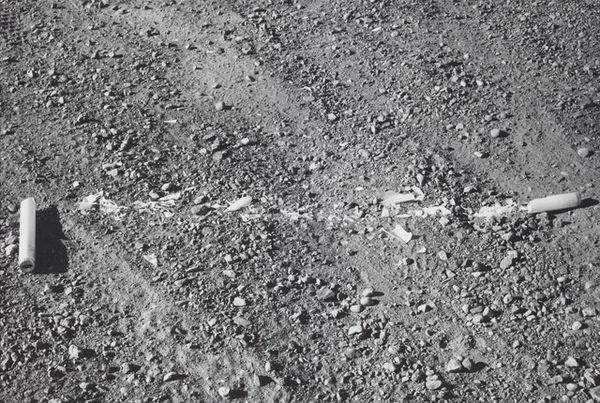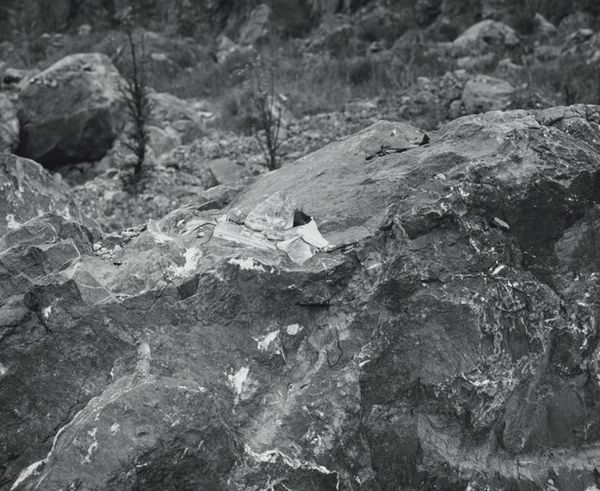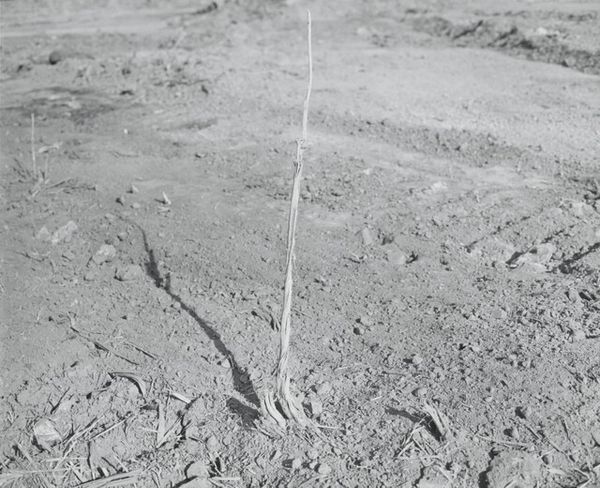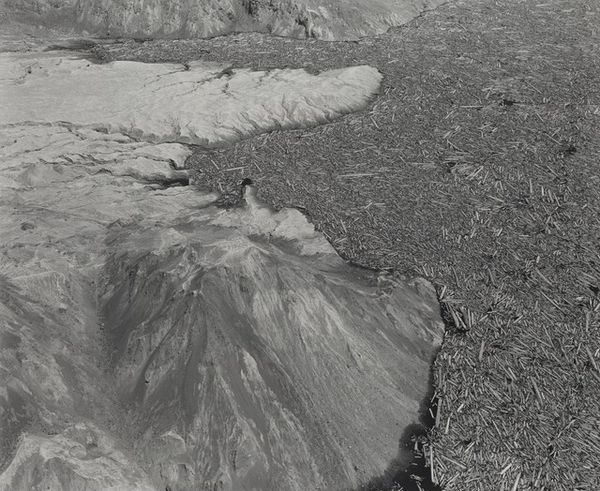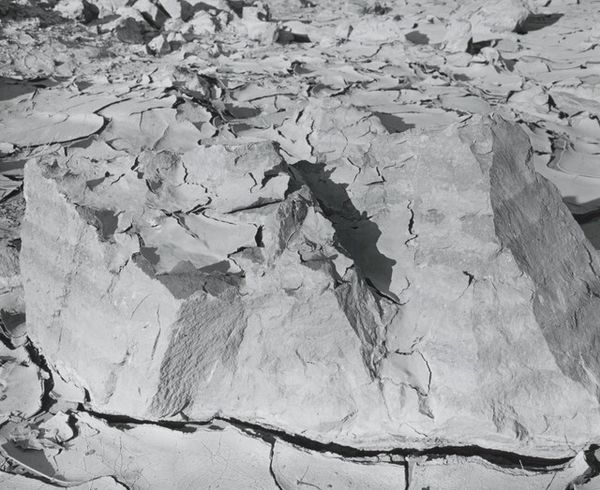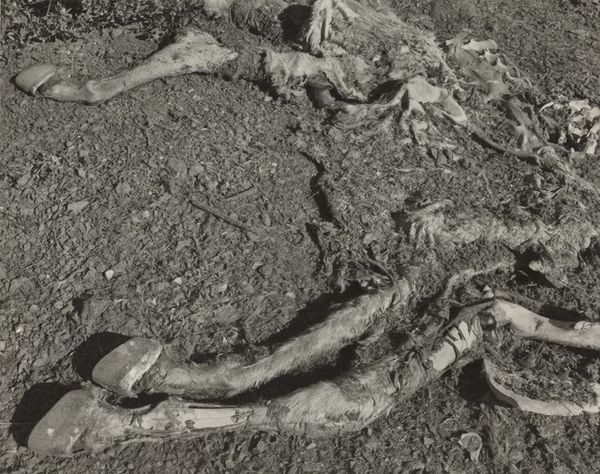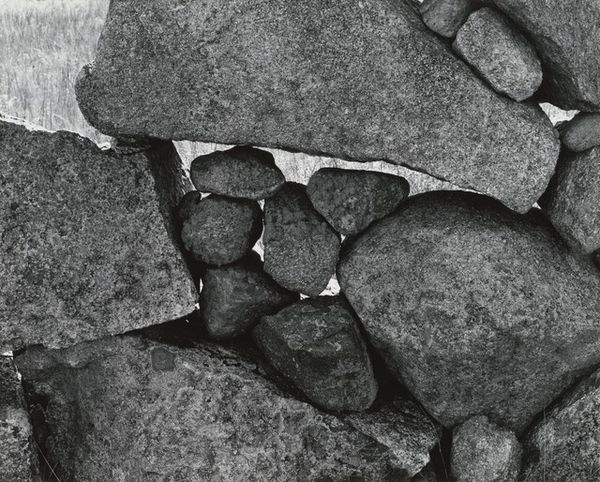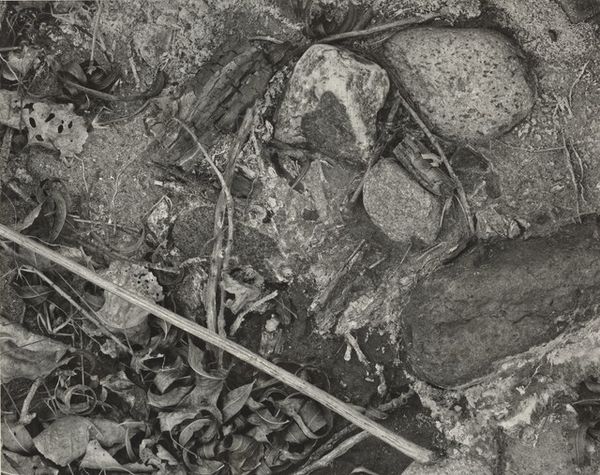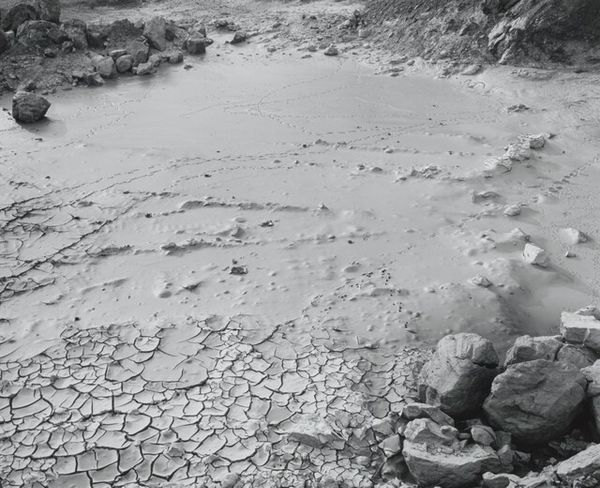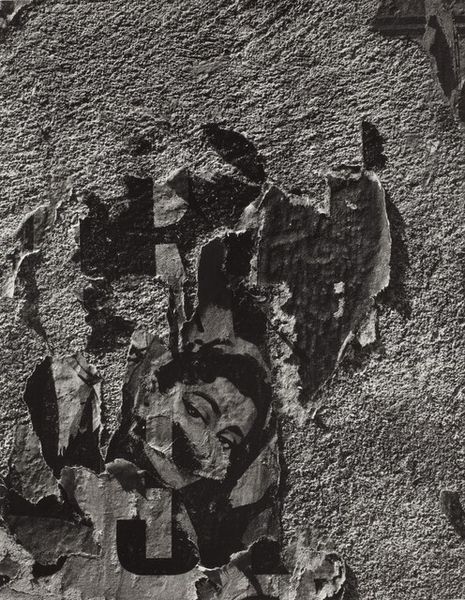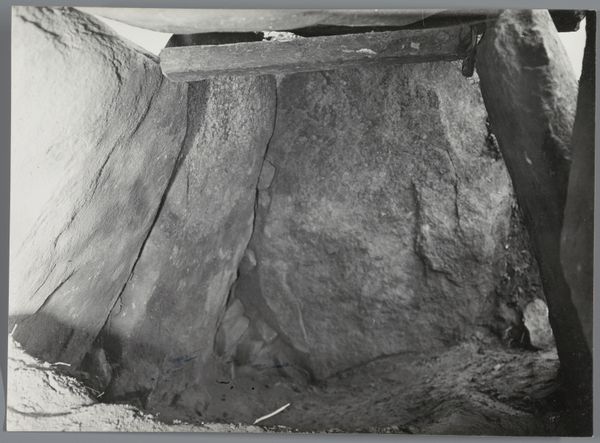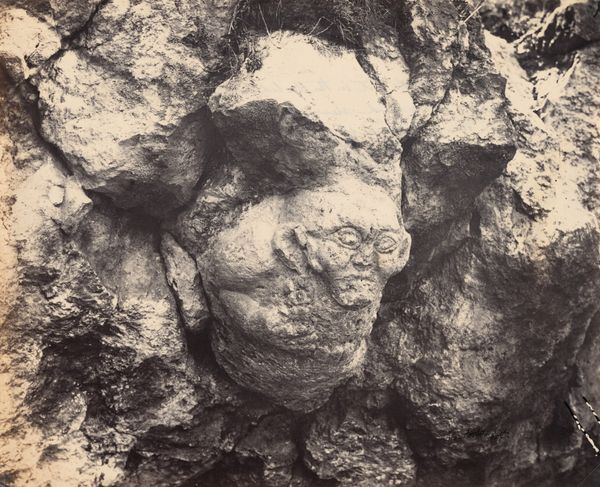
photography
#
conceptual-art
#
landscape
#
photography
#
realism
Dimensions: image: 18.8 × 22.9 cm (7 3/8 × 9 in.) sheet: 20.32 × 25.4 cm (8 × 10 in.)
Copyright: National Gallery of Art: CC0 1.0
Curator: Lewis Baltz captured this intriguing photograph, titled "San Quentin Point, no. 16," sometime between 1982 and 1985. My immediate reaction? Somber, almost brutally honest. It’s all monochrome shades and rough textures. Editor: What resonates for me is that raw materiality – the aggregate, the dirt. It's not romantic in any way. This photograph seems almost clinical in its directness. What do we know about Baltz’s process here? Curator: Well, the "San Quentin Point" series examines spaces adjacent to, or connected with, power and control—in this case, the landscape surrounding the infamous prison. Baltz often challenged notions of traditional landscape photography, opting for what many perceived as banal or overlooked scenes, documenting sites undergoing industrial transformation or human intervention. Editor: It's important to consider the broader historical and social context. This image reflects anxieties around environmental degradation and the relationship between humanity and nature. How are landscapes exploited for labor, extraction, or even imprisonment? This is all laid bare, no? Curator: Precisely. Baltz’s seemingly detached, objective approach reveals the underlying human impact on these sites. He emphasizes the transformation of raw materials into landscapes shaped by economic and political forces. Look how the rocks and soil create a visual inventory, like materials awaiting industrial or social "processing". Editor: There's a deep intersectional critique woven into the photograph. We should remember the incarcerated populations within San Quentin—disproportionately people of color who have historically been subjected to unequal treatment. To depict the literal ground on which their oppression occurs…it amplifies the layers of power, exploitation, and environmental racism. Curator: So, through its straightforward depiction of raw landscape, this photograph serves not just as a visual record but as a quiet challenge to societal power structures embedded within the environment itself. Baltz transforms mundane subjects into insightful comments on materiality. Editor: Seeing the ways in which artists explore and dissect complex issues, and give us these tools for critical discourse, makes me feel like our role can truly activate an engaged public. It prompts the interrogation of our society’s core constructs, to reveal hidden stories etched into its surfaces. Curator: I’m left thinking about how Baltz elevates seemingly mundane subject matter into compelling statements on environmental impact and industrial progress.
Comments
No comments
Be the first to comment and join the conversation on the ultimate creative platform.
